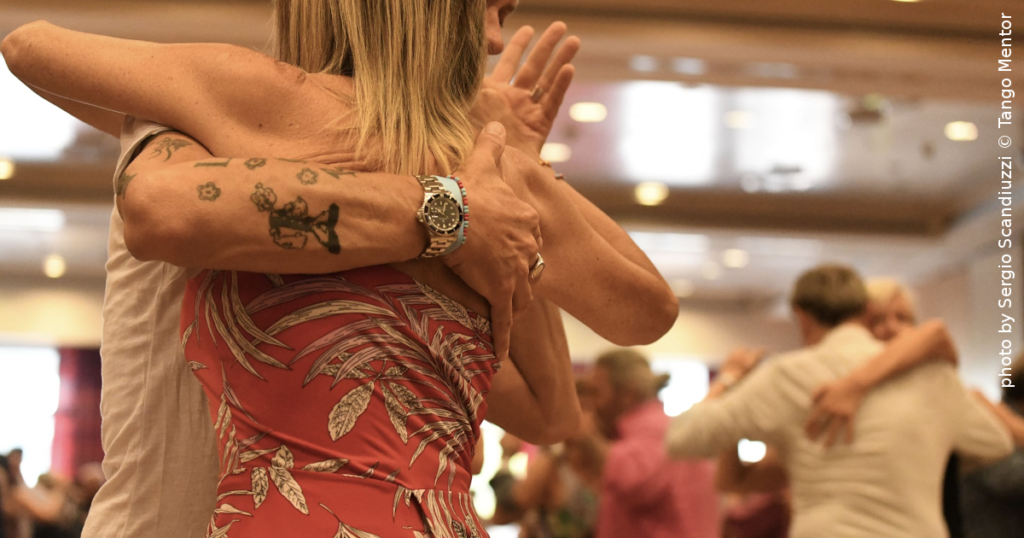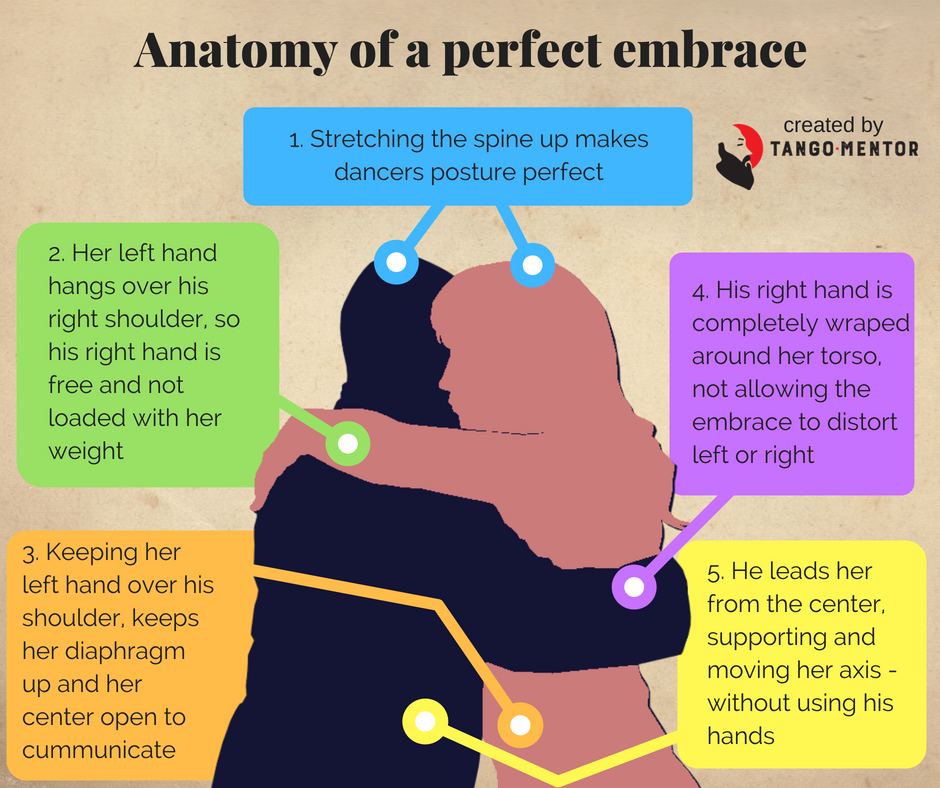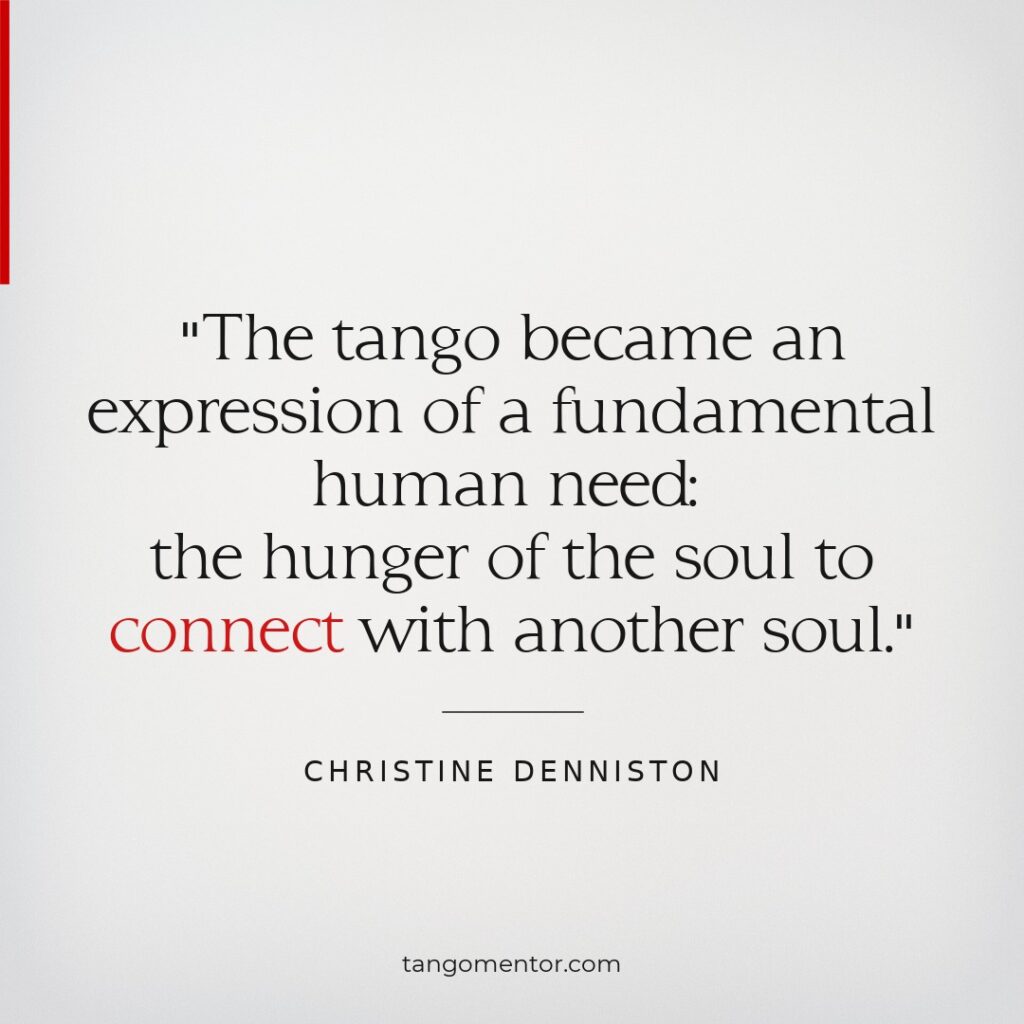
No matter your flavor of tango, I am sure we will agree that the connection is very very important. For me, it’s such a crucial aspect that I find myself discussing it in nearly every article.
However, it’s important to clarify what I mean by “connection,” especially considering that different people have different idea about what it means. Countless discussions have left me realizing that often we agree on the essence, but our differing definitions cause misunderstandings.
When I started learning tango, connection was presented to me as one of the foundational techniques necessary for dancing. I began with the mindset of sending leads with my torso and hands, using “the frame” to guide, reading my partner’s responses, and adjusting to execute intended moves.
I guess more or less, these things have been told to you as well. And they work!
Yet, I couldn’t shake the feeling that something deeper was missing. The question I had was “does the fact that they work mean that they’re enough”? There must be something beyond the movement and the leading-following paradigm.
Through further exploration, conversations with teachers, and experiences on the dance floor, I began to understand that the essence of connection transcends the mere physical mechanics.
The Two Perspectives on Connection
I believe that those two approaches to connection in tango are very real, and they have their reasons depending on the context.
First of all, there’s this question: to whom or what do you connect when you dance? I think that performers and show dancers tend to connect with the audience; that’s their primary goal because it’s their job description. The connection with the partner in that context is seen as a tool that helps execute the moves.
On the other hand, I believe that when people dance in a social context, the connection with the partner is the goal. Of course, you have to connect with the other couples who dance alongside you in the ronda.
In my view, the problem arises when dancers in the social context try to use the first type of connection. When people in the ronda dance to show off, making complex steps, they see the connection as a tool – and by extension, even their partner becomes a tool.
Sorry, but I don’t see a connection there at all.
Just to mention one more thing: I don’t think that what they call “connecting with the music” is a meaningful idea: first, it’s dehumanizing, and second, you can’t connect with something that doesn’t connect with you, something which is non-alive. Connection is a two-way street – if not, it’s not connection at all. Use different words to describe it.
1) The Physical Aspect of Connection
I don’t want to undermine the importance of the physical connection. It’s crucial for transmitting and receiving information about movements. Without it, dancing is impossible.
In my experience as a dancer and a teacher, there are three main points on the body where connection occurs. First and most importantly is the solar plexus, the part of your torso that starts approximately at your belly button and finishes around your heart. This can vary depending on anatomy, partners, and style, but it’s around that region.
I can’t emphasize this enough; it’s crucial. This area is sometimes the only place where dancers transmit and receive communication. I often practice with my hands on my back, communicating only with this area, which I believe is very beneficial for the quality of my dancing.
The second and third points of connection are the hands and the head. In fact, the whole body of the dancer participates, but these two are physically closest. When it comes to the hands, I completely reject the concept of “the frame” or leading with hands and try not to use them for communication at all.
Hands are for hugs, and hugging is communication; this is why I mentioned the hands.
Regarding head position, I think the best way is if they touch at some point, with a slight lean. This relaxes the back and shoulders and creates a more intimate embrace.
Some time ago, I wrote an article titled “The Anatomy of the Perfect Embrace” and I made this infographic – it might be useful to remind you of it now:

The physical aspect of the connection is mostly there for practical reasons – to facilitate movement. Since our bodies are physical, the connection has to manifest itself physically, but the real essence lies beyond it.
2) The Non-Physical Dimension
First of all, I don’t consider myself a dualist: I think I don’t believe that the soul and the body are separate things. So, when I refer to emotional, intellectual, or spiritual aspects, I’m addressing things I consider very close to each other… But, if you fell like it, you can also put into them all of the meaning your personal beliefs are telling you to. I think it will make sense even in that case.
The topic of the non-physical connection in tango is so deep and complex that I don’t think it will fit into one article. Here, I’ll focus on what I mean when I say “connection.” If you ask for a short answer – it’s about overcoming the universal alienation and loneliness we all feel; that part of the human condition that craves fulfillment and a sense of belonging to something bigger.
I don’t claim to have the ultimate knowledge of why the tango embrace is as it is; in fact, I don’t think there’s a way to know that at all. But I believe that the idea closest to the truth is that it was created by emigrants: lonely, disappointed, far away from home and their loved ones, they needed someone to hug them… At least, I think that was part of the reason.
We all sometimes feel like emigrants in our lives. Like refugees from our own world, thrown into a vicious and scary world full of enemies and dangers. Yes, we can have close friends and intimate soulmates in our life, but life itself still feels somewhat cruel.

On top of that, we live in societies that are making us increasingly alienated from one another, closed in our own bubble and running away from things that make us feel uncomfortable.
I believe, maybe naively, that the vast majority of us are good people with good intentions – people who think for themselves and who have some degree of respect and integrity. And when we see injustice and cruelty around us, that makes us feel even more alienated and lonely.
“A person who has not been completely alienated, who has remained sensitive and able to feel, who has not lost the sense of dignity, who is not yet ‘for sale,’ who can still suffer over the suffering of others, who has not acquired fully the having mode of existence – briefly, a person who has remained a person and not become a thing – cannot help feeling lonely, powerless, isolated in present-day society. He cannot help doubting himself and his own convictions, if not his sanity. He cannot help suffering, even though he can experience moments of joy and clarity that are absent in the life of his ‘normal’ contemporaries.”
– Erich Fromm, “The Art of Being”
Your support makes this blog possible. It helps me keep it online… So, if you like this article, please consider a small contribution or gratuity – big or small, as much as you feel like it.
Thank you from the bottom of my heart!
Ivica
Securely processed by PayPal
Connecting is Life
Dancing tango and connecting with your partner is a transformative experience. It confronts you with yourself and with others, fostering personal growth that extends beyond the dance floor.
“The meeting of two personalities is like the contact of two chemical substances: if there is any reaction, both are transformed.”
– C.G. Jung
I may have mentioned in my articles that I don’t dance too much at milongas. I firmly believe in Ricardo Vidort’s wisdom that “when you dance, you must give everything; if you can’t do that, don’t dance.”
Perhaps sometimes it’s just an excuse for my laziness, but I’m certain that when I dance, I try to give my all. The more I give, the the more I enjoy!
But what does giving mean? It’s quite an abstract concept, but I know for sure many of us have felt the joy of it at least once in our lives.
“What does one person give to another? He gives of himself, of the most precious he has—his life. This doesn’t necessarily mean sacrificing his life for the other, but sharing what is alive within him: joy, interest, understanding, knowledge, humor, sadness—all expressions and manifestations of life. In giving of his life, he enriches the other person, enhancing their sense of aliveness and, consequently, his own. Giving isn’t for receiving; it’s joy in itself. Yet, in giving, he inevitably brings something to life in the other person, and that which is awakened reflects back upon him.”
– Erich Fromm, The Art of Loving
The social tango is not just about dancing; I refuse to see it as merely a dance. It is a form that was created and still exists to connect people. This connection has multiple aspects; part of it is practical. But for me, the most meaningful aspect is the emotional and, I would say, even spiritual.
With that in mind, I can say that tango is sometimes a meditation for two.

Interesting points. I’ve had those thoughts at various points in my tango career but now I believe that trying to dance close embrace to EdO music, while definitely better than other stuff, does not necessarily guarantee the holy grail of connection. My view now is that it’s confusing the product for the process. I made a video on my views which you and your readers might also find interesting: https://youtu.be/lAYbYppt-fM?si=cEmSjFORaGlMxaDM. Sorry for self promotion but I’m guessing our goals are roughly congruent.
Thanks Tom, I will check it out!